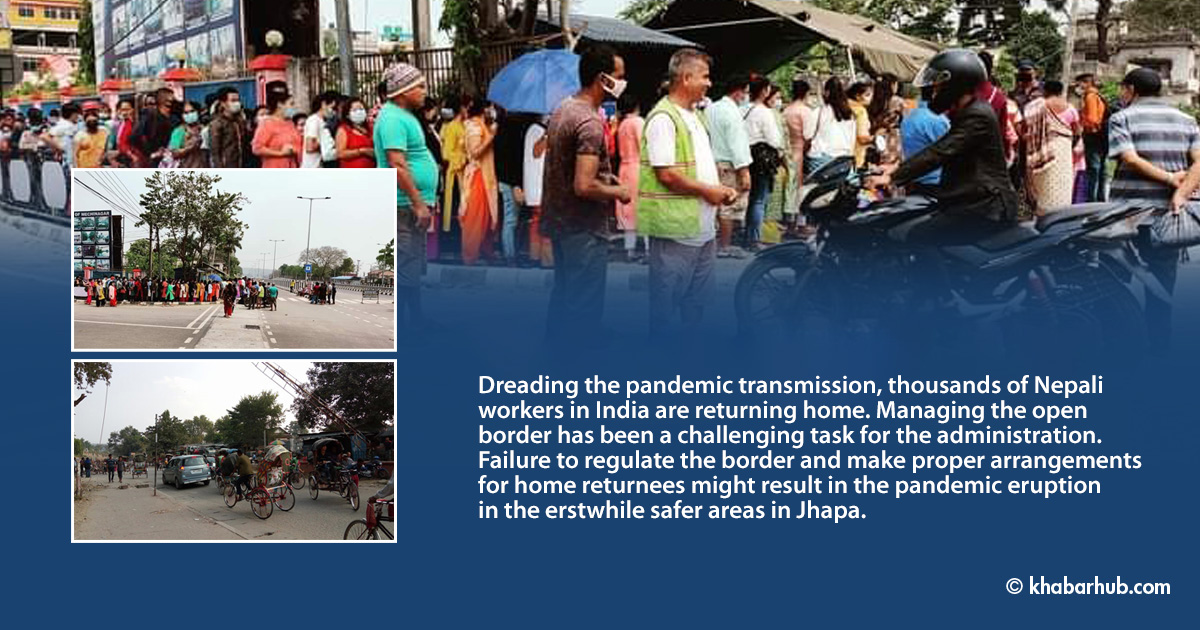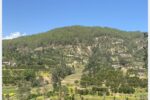JHAPA: A woman infected with coronavirus in the Kankai Municipality of Jhapa died last week. The 39-year-old woman had visited her relatives in India a few days ago.
This is the first death of an infected person in Jhapa after the first wave of corona subsided a few months ago.
After this, another woman of Birtamod, Jhapa was confirmed to have coronavirus. She too had arrived from India a few days earlier.
Jhapa, an eastern district bordering India is facing the terror of the next wave of coronavirus.
With the explosive second wave of coronavirus in various states of India, bordering districts of Nepal have also become more vulnerable to pandemic transmission again.
Due to the open border with Bihar and West Bengal of India, Jhapa is exposed to coronavirus spread risk. Open border control and management are not easy. There is open traffic not only from the Kakadvitta checkpoint but also from many other places.
Borders strictly scrutinized
With the alarming increase in the coronavirus cases in the district, the main checkpoint of Kakadvitta has been strictly monitored.
According to the Area Police Office, Kakadvitta, a thorough record of the Nepalis coming in and going out from Nepal is maintained at the checkpoint.
According to DSP Sunil Dahal, showing an identity card is made mandatory for everyone traveling past the checkpoint.
Similarly, the health desk, which was closed at the checkpoint after the corona infection decline, has been brought back into operation. The Coordination Committee for the Prevention and Control of COVID-19 of Mechinagar Municipality has decided to operate the health desk effectively and keep the isolation and quarantine of the past in a ready-for-operation state.
For the time being, a health check-up has been started at the checkpoint in coordination with the security personnel.
Similarly, every person entering Nepal from India has to produce a COVID-19 negative report of the past 72 hours mandatorily.
More to return home
With the second wave of coronavirus pandemic in India, Nepalis who have gone to India for employment opportunities have started returning home.
According to the District Police Office, Jhapa, about 2,000 Nepalis entered Nepal on Wednesday alone. There are still more people entering Nepal from other informal routes. There is no record of people coming to Nepal through such a porous border. The fact is that the number of India-returnees is alarmingly high.
Similarly, the number of Indians coming to Nepal for treatment from Bihar and West Bengal in India is also high in Jhapa. Mainly, the inhabitants of Bihar and Bengal, Assam, Sikkim and other places, come to the eye hospitals in Jhapa.
Restrictions on the rallies, assemblies and other mass programs
To the east of Jhapa are the Indian states of West Bengal and to the south are the states of Bihar. A large number of Nepalis of the border areas go to India for the purchase of daily necessities and treatment.
Similarly, Indians also come to Nepal from the border settlements of India. Due to the open access between Nepal and India, the risk of infection in the border settlements has increased.
To reduce the risk, the Birtamod Municipality has urged all people not to hold large gatherings and crowds. Similarly, other local levels have also imposed similar restrictions on gathering and mass programs and revived the erstwhile quarantine and isolation centers.









Comment